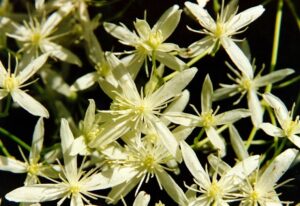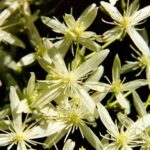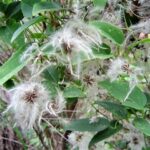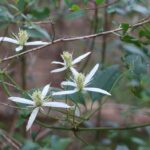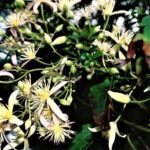Gardening with Indigenous Plants
Indigenous Plant Use
Identification & Control of Common Weeds
| Botanical Name: | Clematis aristata |
| Common Name: | austral clematis, minam 'berang, mountain clematis, old man's beard |
| Sold As: | Tube ($2.00) |
| Plant Type(s): | Climber / Scrambler / Creeper, Bird Attracting, Butterfly Attracting, Insect Attracting, Popular (home), Indigenous Plant Use |
| Indigenous Plant Use: | Taproot can be roasted and eaten.CAUTION: Many plants are poisonous if not collected and prepared properly! |
| Growing Conditions: | Full Sun, Partial Shade, Shade
Moist, Wet, Well Drained |
| Size (HxW): | Climbs up to 15 m high |
| Foliage: | Leaves dull, paired with serrated edges, juvenile - egg-shaped, purplish with white lines, adult - divided into 3 leaflets, leaflets egg-shaped, 3-8 cm x 1-5 cm. Stalks often twisted around other stems. |
| Flowers: | Creamy white, August-March. Male & female flowers on separate plants (dioecious). Branched bunches of starry flowers. Female flowers followed by feathery 'catherine wheel' seed heads. |
| General Comments: | Woody climber, suckering to form new plants. Ascends to upper storey canopy. Birds like the seeds. Moist to wet well drained soil in cool forests and gullies. Requires a cool root run. Useful on pergolas and trellises but will become open below the canopy. Pruning is necessary to clear crowded growth to make way for new, more vigorous growth. |
 Further Information: |
|
| Similar Plant(s): | Clematis microphylla |
| Plant Propagation: | Germination results are best from fresh seed sown in the summer. The species may also be propagated by striking semi-hardwood cuttings under glass in high humidity. |

